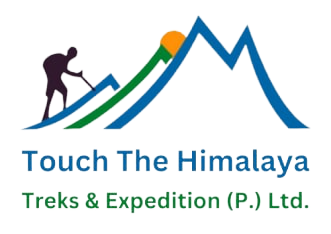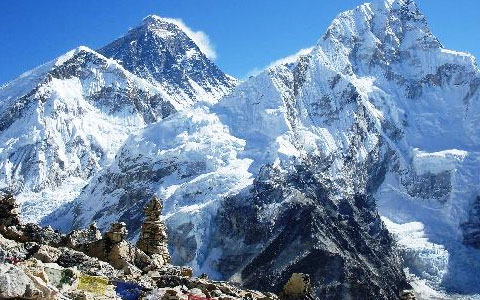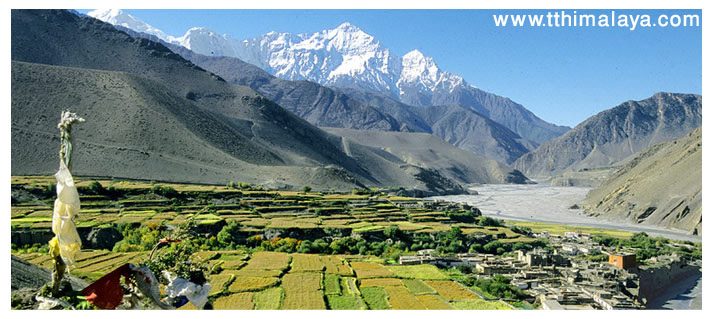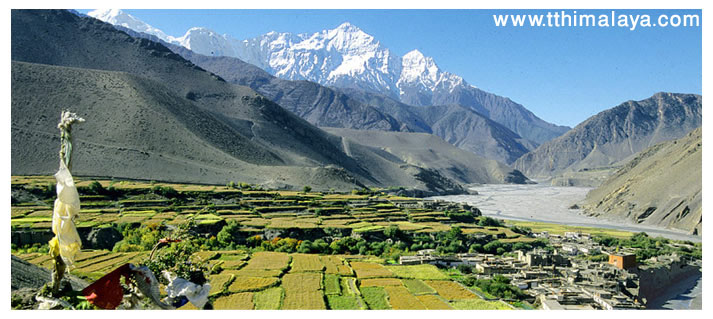Rolwaling Trek - 24 Days
Gaurishankar Conservation Area-
Duration
24 Days
-
Activity
Trekking
-
DifficultyStrenuous Trek
These treks are suitable for experienced trekkers who are physically fit and have some prior experience in high-altitude trekking. The altitude may exceed 5,000 meters, and the terrain can be challenging with steep ascents and descents, rocky trails, and occasional snow or ice. Examples of strenuous treks in Nepal are the Manaslu Circuit Trek, Dhaulagiri Circuit Trek, and the Upper Mustang Trek.
-
Max. Altitude
5755 m
-
Starts
Kathmandu
-
Ends
Kathmandu
-
Group Size
Minimum: 2 pax
-
Best Season
March-June/Sept-Early Dec
PRICE PER PERSON
- 1 PAX US$2550
- 2 PAX US$2450
- 3 PAX US$2350
- 4 PAX US$2350
- 5-10 PAX US$2275
- 11-20 PAX US$2200
- Highlights
- Itinerary
- Route Map
- What Included / Excluded
- Dates & Availability
- Photos & Videos
- Additional Information
TRIP HIGHLIGHTS
Rolwaling Trek Overview
The Rolwaling Trek is a well-liked trekking path in Nepal’s eastern Rolwaling valley. The trip is located in the Gaurishankar Conservation Area and offers stunning views of the Rolwaling Himalayan Range, which includes the 7,000-meter peaks of Gaurishankar and Melungtse. The area is distinguished for its rough topography, steep valleys, and stunning alpine woods. The Tashi Lapcha Pass, which rises to a height of 5,755 meters, marks the trek’s highest point.
The Rolwaling Trek begins in Barabise village, which is about 80 kilometers east of Kathmandu, the Nepalese capital. The walk, which offers a rare chance to explore the local culture and way of life, follows the Rolwaling River through verdant woods and far-flung Sherpa communities. Trekkers can take in breathtaking views of the nearby mountains and glaciers while they are on the trail.
A good level of fitness and expertise are needed for the difficult Rolwaling Trek. Trekkers must negotiate rocky and cold terrain as they travel the route, which includes traversing high passes and making difficult ascents and descents. As a result, it is only recommended for experienced hikers and mountaineers who are well-prepared and have received the necessary training.
WILDLIFE & FLORA:
A stunning hiking location in Nepal, the Rolwaling Trek offers a wide variety of flora and animals. The area is located in the Central Himalayan region and supports a variety of animal, bird, and plant species.
Rhododendron, oak, and pine tree forests cover much of the trek’s lower altitudes. Many bird species, including Satyr Tragopan, Blood Pheasant, and Himalayan Monal, can be found in these woodlands. In these forests, you might also see creatures like musk deer, Himalayan tahr, and black bears.
The vegetation changes as you climb to higher altitudes; you’ll start to observe fewer trees and more shrubs and alpine grasslands instead. The elusive snow leopard, Himalayan tahr, and Himalayan goral might all be found in these regions. The Tsho Rolpa Glacier, the biggest glacier in Nepal, is also traversed during the expedition. The glacier is a great location to see Himalayan vultures, snowcocks, and other raptors.
Primroses, daisies, and rhododendrons are among the lovely flowers that adorn the trekking route in the spring. The walk is even more stunning in the fall because of the pure blue skies and glimpses of snow-capped mountains. In general, the Rolwaling Trek is a fantastic location for anyone who enjoys the outdoors and wildlife.
CULTURE & PEOPLE:
Many ethnic groups, including Sherpas, Tamangs, and Bhramins, call the Rolwaling Trek region home. These groups each have their own distinctive traditions, customs, and ways of living.
The Sherpa community, in particular, is well-known for its mountaineering prowess and capacity for environmental adaptation at high altitudes. They have distinctive rituals and practices relating to the Tibetan Buddhist religion that they adhere to. In addition to their prowess in pottery and basketry, the Tamang community is well recognized for their distinctive dances. The Bhramin community is renowned for its pious customs and participation in neighborhood politics.
The residents of Rolwaling Trek are kind and welcoming to tourists. They are happy to share their culture with visitors because they are proud of it. While on their walk, visitors might see traditional dances, music, and other cultural traditions. Visitors frequently take part in cultural activities like making regional cuisine or dressing in traditional attire.
The Rolwaling Trek residents work in agriculture, livestock husbandry, and tourism as a way of life. They rear animals like yaks and cows and grow crops like potatoes, buckwheat, and barley. The tourism industry has become an important source of income for many families in the region, as it provides job opportunities as trekking guides, porters, and homestay hosts.
ACCOMMODATION & LOGISTICS:
The majority of lodging options during the walk are modest lodges and teahouses managed by local families. These lodges provide minimal meals and simple accommodations with common bathrooms. The lodges’ quality can vary, and some might be higher quality and more comfortable than others. The nights can get fairly chilly, so it is advised to carry a sleeping bag and a warm sleeping bag liner.
It is advised, for logistics purposes, to employ a local guide and porter to assist you in navigating the difficult terrain and to carry your equipment. The guide can assist in planning the trek’s transportation, obtaining the relevant permits, and making other essential arrangements.
The lodges along the trip provide simple meals like momos, noodle soup, and dal bhat (rice, lentils, and veggies) (dumplings). Bringing some high-energy foods and filtering your water with a system or pills is advised.
CLIMBING ROUTES:
The Rolwaling Trek is a challenging trek that passes through a remote valley between the Langtang Range and the Everest Range. Beginning in the Dolakha district town of Barabise, the trip follows the Rolwaling Valley before ascending to the Tashi Lapcha Pass at an elevation of 5,755 meters and entering the Khumbu region.
Ramdung Go (5,925 meters), Parchamo Peak (6,273 meters), and numerous other lesser peaks are among the climbable summits on the Rolwaling Trek that are suited for climbers. For these climbs, climbing permits and a qualified guide are necessary.
PERMITS:
The Rolwaling Trek requires permits, which can be acquired from an authorized trekking organization. The Sagarmatha National Park permit and the Gaurishankar Conservation Area permit are two examples of these licenses. To preserve the environment and local culture, it is crucial to abide by the guidelines outlined in these licenses.
EQUIPMENTS:
Ice axes, crampons, ropes, harnesses, and other specialized climbing gear are necessary for climbing during the Rolwaling Trek. To ensure safety and the appropriate use of equipment, it is crucial to employ a certified guide with climbing experience.
MORE ABOUT ROLWALING TREK:
Rolwaling trek is one of the adventurous trek crossing over one of the most exciting passes of the Himalaya, Tashi Lapcha at 5,755 metre high; to enter into Khumbu Valley has made this trek popular to all adventurers for many years since the Rolwaling Valley was opened.
The Rolwaling valley is steep sided and covered in thick forests therefore the climbs are sheer upright. But this is going to be one of the finest watershed crossings ever made in the entire of Himalaya. One of the highlight of the trip is the camp beside Bigu Gompa, which is an unusual and beautifully situated nunnery. Further walking through the summer pasture lands and narrow valleys that opens up into a wide bowl; give us our first taste of open mountain scenery – totally unique and mystical.
As we leave the Rolwaling Valley after having climbed the highest point of this adventure, we may feel although the trek is only just beginning. Trekking back way we continue down traversing into the Thame Valley and onto Namche Bazaar and then to Lukla for the scenic panoramic flight to Kathmandu and visit some highlights of world heritage sites in Kathmandu.
What we do best for our guest?
All our treks are managed by a team of professionally trained Leader/guide responsible for all aspects of the running of the trek. Our special departure trek is well versed in the culture and natural history of the Himalayas. Your day start with a cup of hot tea served in your room. A member of the trekking staff followed by a bowl of hot washing water, after which you will be required to pack your luggage and the porters loaded whilst we are having breakfast. After breakfast we set off on the trail, enjoying the pleasant cool of the morning. Your day’s trek involves navigating numerous picturesque forests, hills, mountains and the local villages for the next three hours. Around mid-day we usually stop for a pleasant spot along the way for lunch. Your midday lunch break usually lasts around an hour and is a time to relax, pop the boots off and air those feet! Plenty of time is allowed for photograph in the route. After lunch you’ll walk another three hours or so, before you stop for the night. You have enough time to change, freshen up, before exploring an area.
Each evening is spent as per your interest for reading or chatting with the fellow trekkers and crew members or a pack of cards is an advantage; the crew love teaching various Nepali card games and learning new Western games. Our porters and Sherpa’s also like to have singing and dancing competitions in which they love you to join in! Finally, it’s off to bed for a well deserved night’s rest before you start it all again.
All the trip grading can be view here.
If you have any confusion for booking process please visit our booking process.
Itinerary
Arrival in Kathmandu Check Into hotel
Trek preparation and introduce with trekking staffs
Drive to Barabise and trek near Simle ~ 3-4 hrs walking
Trek to Dolangsa, 4-5 hrs walking
Trek to Tingsang-la, 4 hrs walking (3,319m/10886ft)
Trek to Bigu Gomba, 4-5 hrs walking (2,310m/7577ft)
Trek to Chilangka, 4-5 hrs walking
Trek to Bulung, 5-6 hrs walking (1,890m/6199ft)
Trek to Gongar Khola, 5-6 hrs walking (1,430m/4690ft)
Trek to Simigaon, 4-5 hrs walking
Trek to Dovan, 5-6 hrs walking
Trek to Beding, 5-6 hrs walking (3,690m/12,103ft)
Trek to Na Gaon, 3-4 hrs walking
Acclimatization day at Na Gaon.
Trek to Kabuk at Tsho Rolpa, 4-5 hrs walking
Trek to Drolambau Glacier near Tashi Laptsa Base Camp
Traverse Tashi Laptsa Pass ~ 7-8 hrs
Reserve day in case of delay due to bad weather
Trek to Thame, 5-6 hrs
Trek to Namche Bazaar, 4-5 hrs
Namche Bazaar to Phakding- 4hrs
Trek down from Phakding to Lukla
Fly back to Kathmandu
Final Departure for the Airport
Itinerary Note:
This itinerary is just the guide line, it can be changed (longer or shorter) as per our client's wishes, fitness, ground reality and weather condition. If you're not satisfied or have an alternative plan please feel free to discuss it with us By Clicking :- ASK QUESTION or COSTOMIZE YOUR TRIP.What's Included / Excluded
Cost Incluldes
- Airport pick up and drop off by Car, jeep, Hiace or Bus. Depends on the number of arrives.
- Complimentary welcome or farewell dinner according to the suitability of our client’s time.
- Beginning two nights stay on arrival in Kathmandu in tourist standard hotel with breakfast included (twin share basis)
- Internal transport and flight within Nepal as per the itinerary
- All necessary trekking and area permit & fees, (National Park area special permit and TIMs cards).
- Three meals a day during the trek (Breakfast/Lunch/Dinner)
- All accommodation during trek (Tea house/guesthouse)
- An experienced, English-speaking, government-licensed, first aid trained trekking guide and assistant guide (5 trekkers: 1 assistant guide)
- An expert local porter from belonging area (2 trekkers: 1 porter)
- Duffel bag, (to be returned after trip completion), complementary trekking maps. If needed down jacket and sleeping bag will be provided in rent.
- Staff costs including their salary, insurance, Equipment, transport, food and accommodations
- Rescue arrangements if necessary.
- Basic First-aid kit (carried by trekking guide)
- All government and local taxes for Trekking, Agency service charge and government tax/vat.
- Achievement Certificate
Cost Excludes
- International airfare and Nepal visa fee.
- Lunch and Dinner in Kathmandu
- Extra night accommodation in Kathmandu because of early arrival, late departure, early return from mountain (due to any reason) than in the scheduled itinerary
- Personal insurance which covers medical, emergency evacuation, loss or theft of property.
- Personal gears and equipment.
- Personal expenses such as laundry, hot showers, battery charging, Wifi, etc
- Entry fees and costs in sightseeing (temples, monasteries, etc)
- Tips and gratitude provided to guide and porter.
Fixed Departure
Can't find trip as your Schedule Date?
- Above mentioned departure dates “AVILABLE”‘ means these dates are currently open for bookings for the particular Trek. If the mentioned dates are not suitable with your preferred date, you can make your own private trip by clicking the box billow in the bottom.
- A date “GUARANTEED” means that we give guarantees that the costumers will be able to start theirs trek on the specified date, regardless of whether the seats are fully booked or not.
- “LIMITED”‘ Status refers to a type of seats booking for the trek, that has been certain seats available to book
- In the status, “CLOSED” means that the Trekkers seats are fully booked and there are no more seats available for new booking. Trekkers may be put on a waitlist for a chance to get a seat if there are cancellations unless your are requested to plan your own private trip by clicking the box billow in the bottom.
Photos & Videos
Additional Information
Manaslu Circuit Trek [ 1 Reviews ]
A dear friends
September 29, 2014A dear friends
Namaste!
Madan Neupane is the owner of Touch The Himalaya Treks is not only a professional but a person that meets your needs and knows how to be very helpful, as well as a dear friend.
Very trustworthy person, I have more a friend in Nepal now!
Thanks Madan
Marco Billi
Date of experience: November 2013

















